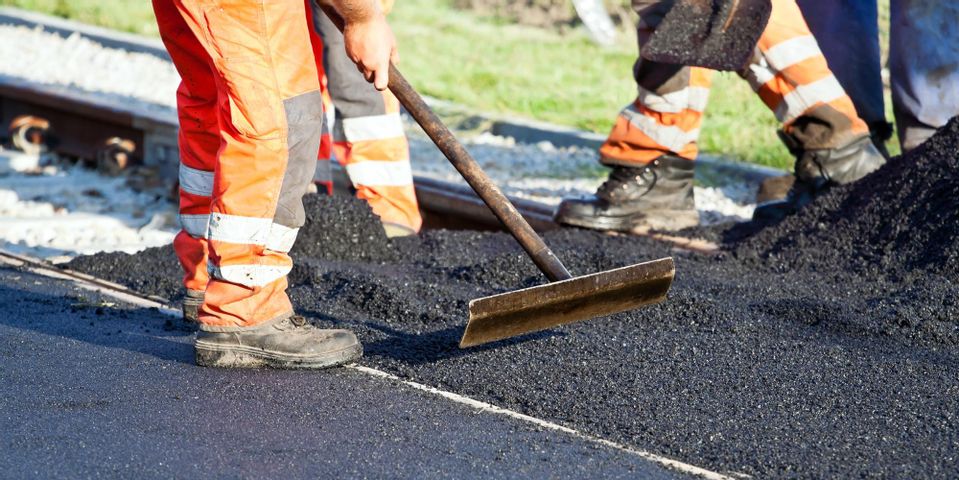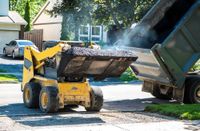The 8-Step Process of Bituminous Concrete Installation

Bituminous concrete, or asphalt, comprises the vast majority of roads, sidewalks, and driveways around the world. If you've ever wondered about what goes into the installation of an asphalt surface, here are the eight steps involved in this process.
The 8-Part Asphalt Installation Process
1. Removal
First, the old surface needs to be demolished and removed. Heavy machinery and equipment come in to break up the pavement and load it into dump trucks. It is then moved to either be disposed of or recycled.
2. Grading & Sloping
Next, using sophisticated lasers, graders prime the land to ensure water will sufficiently run off the finished product. The precise slope needs to be achieved, so it will be comfortable to travel on and will not retain water. Water damage can cause cracks, breaks, and potholes in bituminous concrete.
3. Install the Sub-Base
The sub-base supports the entire finished asphalt surface. It also serves as a frost barrier between the ground and the surface layer. Measurements are taken to ensure the sub-base has the proper amount of stability and compaction.
4. Check That the Sub-Base Has the Necessary Support
Before adding concrete, the installer needs to check that the sub-base has enough strength to support the surface. This is often done by repairing soft spots via undercutting, in which the soil two to three feet below the sub-base is reinforced with stronger material.
5. Add the Binder
 This layer binds the surface to the sub-base. It is mixed with oil to guarantee the strongest hold. Consider this the glue of the asphalt surface.
This layer binds the surface to the sub-base. It is mixed with oil to guarantee the strongest hold. Consider this the glue of the asphalt surface.
6. Pour the Asphalt
Bituminous concrete is then poured onto the binder. Once it sets, it will create a smooth and dependable top layer, bolstered by the support of the binder and sub-base.
7. Install Transitions
The new concrete will need to be adjoined with existing concrete surfaces. This is done via transitioning tools like butt joints. Butt joints help the entire surface, new and old, feel like one solid unit when a vehicle passes over top.
8. Smoothing & Compacting
Finally, a roller truck will smooth and compact the new concrete. This last step pushes in any bits of stone that may be sticking through the surface and creates a more uniform top layer. Once everything has had time to set, the project is finished.
If you're considering installing bituminous concrete on your property, contact The L. Suzio York Hill Companies. This asphalt supply company has been providing bituminous concrete products to New Haven County, CT, since 1898. Call (203) 237-8421 to place an order. Visit them online to learn more about their products.
About the Business
Have a question? Ask the experts!
Send your question

